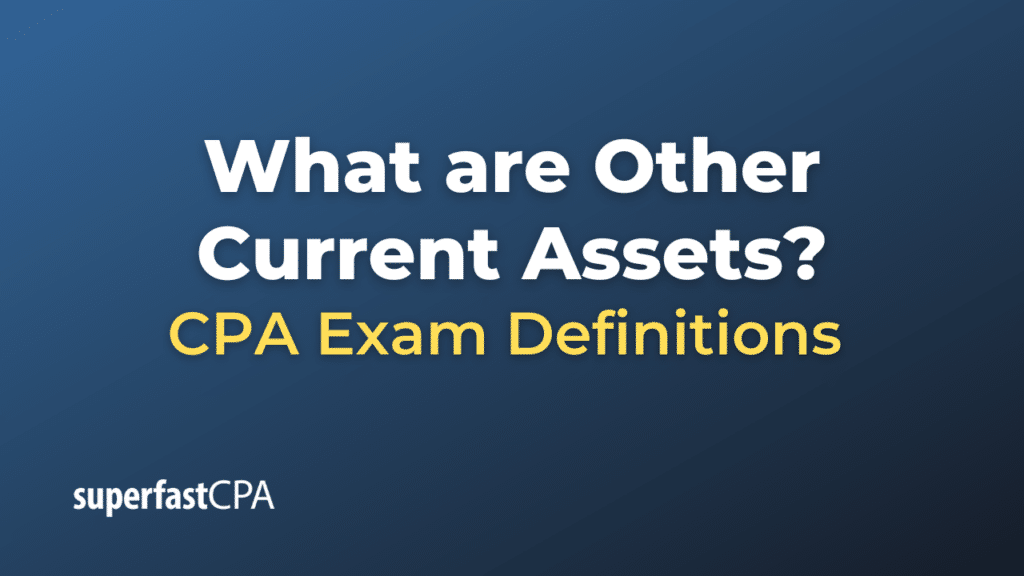Other Current Assets
Other current assets (OCA) refer to a category of assets that are expected to be converted into cash, sold, or consumed within one year or the operating cycle, whichever is longer, but don’t fit into the common types of current assets.
Common types of current assets include:
- Cash and cash equivalents
- Marketable securities
- Accounts receivable
- Inventory
- Prepaid expenses
When an asset doesn’t fit into one of these common categories but is still expected to provide economic benefit in the short term, it’s often listed as an other current asset. Examples of other current assets might include:
- Tax refunds: If a company has overpaid its taxes and is due for a refund within the next year, that refund could be listed as an other current asset.
- Short-term loans to employees: If a company has given a short-term loan to an employee and expects to be paid back within a year, that loan could be listed as an other current asset.
- Advances to suppliers: If a company has paid a supplier in advance for goods or services to be received within the next year, that advance could be listed as an other current asset.
- Other receivables: This may include amounts due from employees, insurance claims, or deposits.
The value and composition of other current assets can vary significantly from company to company, depending on the nature of the company’s operations and industry practices. Therefore, it’s important to look at the notes to the financial statements for a more detailed understanding of what a company’s other current assets include.
Example of Other Current Assets
Let’s consider an example to understand how Other Current Assets (OCA) would appear on a company’s balance sheet.
Let’s say we have a company named XYZ Corp. and here’s a simplified version of its balance sheet:
| XYZ Corp. |
|---|
| Balance Sheet |
| As of December 31, 2023 |
| Current Assets | Amount (in USD) |
|---|---|
| Cash and Cash Equivalents | $100,000 |
| Accounts Receivable | $200,000 |
| Inventory | $150,000 |
| Prepaid Expenses | $50,000 |
| Other Current Assets | |
| Short-term loans to employees | $10,000 |
| Advance to suppliers | $20,000 |
| Total Other Current Assets | $30,000 |
| Total Current Assets | $530,000 |
In this example, XYZ Corp.’s Other Current Assets are $30,000, which consist of short-term loans to employees of $10,000 and advances to suppliers of $20,000. These assets are expected to be converted into cash within one year and are hence classified as current assets. They are not standard categories like cash, accounts receivable, inventory, or prepaid expenses, and thus are listed separately as Other Current Assets.
When you sum up all the categories of current assets, you get Total Current Assets of $530,000. These figures help analysts and potential investors understand the company’s short-term financial health and liquidity.













